If you live in India and have not seen ‘Drishyam,’ you have waived all your rights to be called a film appreciator, nor can you call yourself a simple filmgoer. Better find a rock, and start living under it.
Drishyam originally is a 2013 Malayalam language thriller. ‘Originally’ because this movie was remade in other languages: Tamil, Telegu, Kannada, and Hindi. Not dubbed, but remade, and that too with ‘bankable’ stars. Original Malayalam starred Mohanlal, the Kannada’ Drishya’ starring Ravichandra, ‘Drushyam’ in Telegu stars Venkatesh, “Papanasam’ in Tamil featuring Kamal Haasan, and the Hindi ‘Drishyam’ with Ajay Devgn. Now you should realize that the statement made in paragraph one is not an exaggeration!
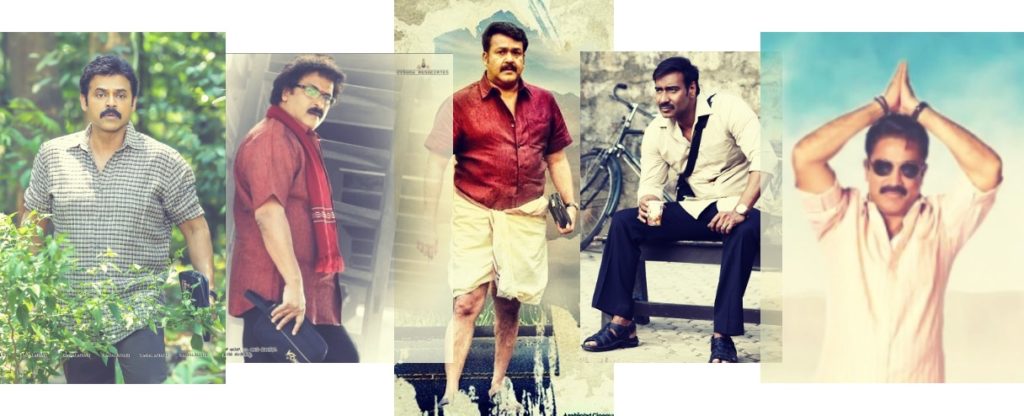
What drove this frenzy of remakes in two years? The reason, a superbly tight-knit story by Jeetu Joseph. Drishyam, at its core, is a well-crafted thriller, ripe with elements of surprise, suspense, a cat and mouse game played to perfection.
(Plot overview) Drishyam is the story of a family man, Georgekutty. He started his life as an orphan, barely schooled, but he has done decently to start a small-time cable TV business in a rural area through hard work. All Georgekutty has, is his family, wife, and two daughters. In a filmy way, he is ready to go to whatever extent to protect his family. One stormy night, a boy tries to blackmail Georgekutty’s daughter (Anju) with hidden camera clips. When confronted by Anju’s mother Rani, an altercation ensues between Anju and the boy. Anju accidentally hits the boy with a rod; the head injury is internal and almost instantaneously fatal. Afraid and not understanding what to do, Rani and Anju bury the boy in their garden.
When Georgekutty returns the next morning, he learns of the events of the previous night. Also, he realizes that the boy is the son of Inspector General Geetha Prabhakar. Immediately, Georgekutty understands that the odds are against him. The underdog gets to carving out a plan to save his family. What follows is a battle of wits between the simpleton Georgekutty and the shrewd Geeta. The movie is a must-watch for the tight narrative and the visual created by Jeetu Joseph.
Well, the ending itself is no surprise; Georgekutty (the filmy hero) is successful. What is interesting is the treatment given to the story when it was remade. While making the language shift, the adaptations are minimal. The names are contextualized locally; Georgekutty becomes Suyambulingam in Tamil or Vijay Salgaonkar in Hindi. Some religious references are changed; a calf in Kerala becomes a dog in Goa, very minor changes. The scenery is deliberately kept the same, a scenic coastal town, even the nature of the house in which the characters reside. The story is weaved such that all these elements are essential/perfect for it; thus, thankfully, they remain unchanged.
One superficial difference is the production quality, budgets, and supporting actors’ casting. Once a major star is cast for a role, the budget constraints show in selecting the other characters based on the relative prosperity of the film industries the remakes represent. If Hindi ‘Drishyam’ is on the top end of this scale, then the Kannada ‘Drishya’ is at the backend. Obviously, we are keeping the Malayalam original out of any such scales.
Besides economic differences, these movies also serve as an insight into the various language industries’ sensibilities. This especially is highlighted in the treatment of the central character Georgekutty. (Most of the other actors like Asha Sarath (Geetha Prabhakar) have reprised their roles in other languages; however, the central character of Georgekutty is played by different stars in every language)
Mohanlal, the Malayalam’s Georgekutty, is performed as more of a means and ends kind of a guy. There is no hint of remorse (after all, a murder has occurred), nor is there any kind of doubt in Georgekutty’s mind. No internal drama is unfolding within him. For him, the end goal is to save his family, and the means are consequently justified. Georgekutty’s morality is like a compass, always giving a firm bearing on where the north lies, cold, calm, and steady.

Contrast this to Tamil’s Georgekutty, played by Kamal Haasan. He is never calm; Kamal Haasan is in turmoil. He is the most disturbed of all the Georgekutty’s. He carries the guilt of murder, begs for forgiveness, and empathizes with his opponents. The treatment is more dramatic. If Mohanlal has slightly wet eyes, Kamal Haasan is a full-blown crying wreck. In crucial moments of the film, Mohanlal appears to be in control; he is controlling the game. Whereas Kamal Haasan comes forth as someone playing out his luck, this heightens the tension.
The Kannada Georgekutty is above all such deliberations. He carries a zen-like demeanor. Here Georgekutty has moved beyond means and ends; he sees it as some form of destiny, something that had to be done and got done. Malayalam’s Georgekutty wants to stay oblivious to the sanctity/morality of murder. Tamil’s Georgekutty wants to spend hours and hours tormenting himself over the loss of life. Kannada’s Georgekutty carries a firm, reasoned explanation for the justification of that murder. The Telegu Georgekutty returns to the roots of means and ends but adds a tinge of remorse, acknowledging, whatever happened was wrong and probably should not have happened. The Hindi Georgekutty is resolute in his actions. His belief system is closer to the Kannada version, entirely justifying the act of murder; however, his words are more comparable to the Telegu version. The Hindi Georgekutty utters remorseful words but does not seem apologetic and hence comes off as a bit insincere.
Can cinema become an insight into the people, the creators, the audience of a particular kind of language cinema? It is up to you to decide (after watching all the five films!)
Now let’s discuss the sequel to this movie, Drishyam 2 (currently only in Malayalam). Just like the lengthy essay so far before getting to the point, Drishyam 2 has a long-winded first half. And, hopefully, like the film, this essay also manages to bring together all the themes at the end.
Drishyam 2 is a sequel, the way sequels should be. It is not like those sequels in which if there is kidnapping in the first part, there will be another kidnapping in the second part! Drishyam 2 is a proper sequel; the movie picks up the thread six years after the original film’s events. No new murder; the film still revolves around the original murder. It has the same elements of a cat and mouse game, a battle of wits, with unexpected twists and turns.
Drishyam 2 handles an essential dilemma of the first film. See, from a moral standpoint, a crime has gone unpunished. The crime is not like some money heist, wherein you loot a scrupulous person or a predatory bank and where you can justify ‘Robinhood’ morals. In Drishyam, the serious crime of murder has gone unpunished, Georgekutty and his family have got away with murder. This moral void affects the creator of this universe: the writer.
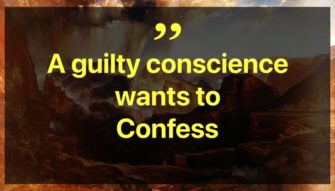
In Drishyam 2, the writer deals with the fact that ‘Georgekutty got away’ and intelligently changes the narrative to ‘Georgekutty got away from prison, but did he get away from a punishment.’
Geogrekutty’s life six years later is like that of a chess player, who has to continually think ten to twelve moves down the line. The crucial difference is that this game of wits is never-ending; Georgekutty’s opponents may keep on changing and refreshing themselves, but, Georgekutty has to be on his toes constantly. The movie deals with the loneliness of ‘being Georgekutty.’ He cannot trust anyone with his secrets, not even his wife, yet he has to try and hold his family together.
The movie is also a social commentary. In the tight-knit rural community, everyone is sympathetic to the ‘poor’ Georgekutty; the villagers rally for him as the underdog. However, in Drishyam 2, Georgekutty has become successful, from running a small-time cable operation. He is now the owner of a movie theater. People detest this new ‘rich’ Georgekutty,’ they now gossip behind his back; they believe in his guilt. They itch for the ‘rich’ Georgekutty to fall.
Drishyam 2 might feel a bit slow; it is also a bit meta (In the movie, there are continuous discussions about writing a screenplay for an upcoming film.) Other meta stuff in the movie is an interesting parallel. Georgekutty, a criminal, a family man, comes close to getting caught due to another family man, a police informant. The informant himself is a murderer, and his ratting out of Georgekutty is motivated by ‘family’ reasons. This sub-narrative brings us back to the ‘means and ends’ analysis. The informant’s ends are his family, and his means are sacrificing Georgekutty’s family. Georgekutty’s ends are his wife and daughters, and his means require sacrificing Geetha’s son. Both, Georgekutty and the informant are single-minded, one a bit more sophisticated to get away with crime, and the other not adept at escaping police. But, both have an unwavering moral compass, ‘things just have to be done.’
Drishyam 2 on its own seems a bit slow, with some logical inconsistencies compared to the first movie. However, we need to see it in the larger context, parts of the same story. At start it feels like Georgekutty’s march to a confession, later it reveals itself as thriller, transforms Georgekutty in a meticulous planner, but, in the end, as the central character says, ‘it takes a lot of luck, and so what if the hero is lucky, it is just a film.’
A patient must-watch!
On a side note, Drishyam has also broken Indian language barriers. It has been made in Sinhala. Drishyam also reached Chinese shores as the ‘Sheep without a Shepherd.’ Even after knowing this, you do not wish to watch the movies, then you should get crushed by the rock you live under.



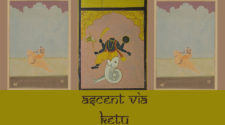


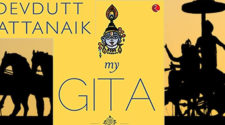


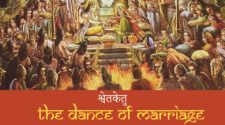


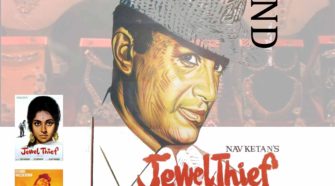
I liked this new take on reviews. Nice insights into the makers minds. I haven’t seen the Kerala version, but rather the hindi version, now in dilemma should I watch Kerala version or wait for Korean one 😀
or wait for Nolan to remake one in holly wood